Fifty-six-year-old Steve Reinhardt had always thought himself resilient. But some strokes of bad luck left him with a serious confidence crisis.

He’d spent 25 years as a senior marketing executive, but in the Great Recession he put his nest egg in the Bernie Madoff basket. A couple of years later, his wife was killed in a head-on car accident.
Not knowing how to metabolize his grief and not wanting to burden his friends, he threw himself into his work and became the successful chief marketing officer of a startup that needed a turnaround. But after that, he got stuck. Steve interviewed with nearly a dozen companies, but he repeatedly saw them hiring marketing leaders in their 30s.
By early 2019, Steve found himself working as a front desk clerk at a Napa Valley luxury hotel, and all of his emotions caught up with him. He says, “Losing virtually everything left me broken and in deep despair in every way imaginable.”
Steve’s story is increasingly common: People in midlife feel like they played the Game of Life wrong with no societal support to help them press the reset button. This is why I founded the Modern Elder Academy, the world’s first midlife wisdom school. After meeting more than 750 students from 22 countries, interviewing over 150 midlifers for my book, and reviewing the research on midlife well-being, my team and I have developed some best practices for navigating a bumpy life transition.
The rollercoaster of midlife
We live in a confusing time. Most of us are going to live longer than past generations. Yet, in an increasingly digital work world, power is moving younger. A growing number of midlife workers are anxious about millennials or machine learning making them irrelevant. The World Economic Forum has suggested that 101 hours of retraining and upskilling will be necessary for all employees between 2018 and 2022 to address the tech revolution. And the world is changing faster than ever.
Longer, younger, faster has created baffled, anxious midlifers. In fact, the U.S. suicide rate for those 45-64 has jumped nearly 50 percent compared to 20 years ago.
Our societal narrative on aging isn’t doing us any favors. We stumble into midlife, have a crisis, and—on the other side of that—can look forward to decrepitude and death. It’s no wonder that we don’t look at the transition from adulthood to elderhood in the same anticipatory way we do childhood to adulthood.
And this “crisis” is now a marathon. The Oxford English Dictionary defines middle age as 45-65, but midlife crises are affecting more people outside of that age range—both younger and older. In Silicon Valley, Hollywood, Madison Avenue, or any company that is trying to compete in the digital economy, people have begun to start feeling old in their mid 30s. And, with our additional longevity, more of us are ignoring the traditional retirement age and continuing to work until our mid 70s or beyond.
On top of all these trends, there might be a natural downturn in happiness around midlife. Researchers have found increasing evidence of a U-curve of happiness, such that contentment declines after our 20s, bottoms out in our late 40s (due to a combination of too many responsibilities, too many unmet dreams, and a growing awareness of our mortality), and rises starting in our 50s. That last part is good news, and it’s directly in contrast to our narratives about aging; it seems to happen because we feel less stress and regret, compete less for status, dwell less on negative information, and are better able to regulate our emotions. In other words, around 50, we tend to reconfigure our expectations of life.
But we do precious little to warn midlifers of the upcoming twists and turns on the roadmap of life, nor do we give them hints about the unexpected pleasures of aging or how to attain them. Maybe it’s time that we as a society help people prepare for and navigate their midlife transitions.
Wise lessons for midlifers
I came face-to-face with my own aging seven years ago when I joined Airbnb as a senior leader twice the age of the average employee. I was not in my natural habitat, having been a long-time boutique hotelier mostly working with other Boomers. Often, my fear of not understanding millennial or tech lingo turned into judgment toward my younger coworkers. While writing a book about this experience, Wisdom@Work: The Making of a Modern Elder, I was struck at how shell-shocked most of the midlifers I interviewed felt about the transition they were facing.
This led me to create Modern Elder Academy (MEA) in Mexico. During our week-long programs, students learn how to shift their mindset on aging to become more resilient and adaptable. MEA helps to achieve this shift through experiential learning in nature, classroom time focused on social science’s growing awareness of the unexpected pleasures of aging, and opportunities to try things for the first time—whether it’s meditation or yoga, communal bread baking, improv acting and comedy, or sharing emotions in an unfiltered way. The experience with 16-20 fellow midlifers, from former CEOs to social workers, creates a sense of connection, purpose, and empowerment that lasts far beyond the week.
At MEA, wisdom isn’t taught; it’s shared. Here are four lessons we’ve learned about how those in midlife can successfully reframe their perspective on aging.
Embrace middlescence. Recently, the concept of “middlescence” has been gaining momentum as a bookend to adolescence. Just like adolescence is full of transitions, so is middlescence: parents passing away, career change, becoming an “empty nester,” divorce, menopause, growing interest in one’s internal life, a surprise health diagnosis.
Since adolescence—with its unique hormonal and emotional changes—was “discovered” by psychologist G. Stanley Hall 115 years ago, society created child labor laws, junior and senior high schools, and counseling tools for teens in this transitional period. But, because average longevity in the U.S. wasn’t even 50 years old a century ago, midlifers aren’t offered many kinds of societal rituals, community support, or public policies as they cross the threshold of this new life stage.
A program like Modern Elder Academy offers one such ritual, as do the emerging “back to school” programs at American universities. There are now 70 schools of higher education looking to emulate the kind of program started by Stanford’s Distinguished Careers Institute (DCI), for example, which offers a one-year program to midlifers focused on purpose, wellness, and community. Since DCI fellows take classes with students, DCI also fosters intergenerational relationships.
Change your mindset. In addition to recognizing middlescence as a valuable and unique life stage, midlifers fare better when they shift their views about aging. Research by Yale professor Becca Levy found that older people with a positive mindset on aging—who felt worthy, happy, and hopeful as they got older—lived 7.5 years longer than those with a negative perspective. This is a bigger increase in lifespan than people got from starting to exercise or quitting smoking.
One way to develop a more positive view of aging—and to reduce your stress and ramp up your resilience and adaptability—is to transition from a fixed to a growth mindset. A fixed mindset in midlife means you perceive your competencies as stagnant or even diminishing, so your sandbox continues to narrow. Shifting to a growth mindset means you’re focused less on proving yourself and more on improving yourself, which can mean your sandbox grows larger as you age. For me, this has meant learning Spanish and how to surf in my late 50s.
For many of us, we think we’re failing at life because we’re awkwardly in transition in our 40s, 50s, or 60s. Yet, if you’re 53 years old (the average at MEA) and you’re going to live until 90, you’re not even halfway through your adult life. So, whether it’s learning drawing or writing poetry for the first time, a growth mindset opens up your life at a point when many people find themselves bored or stuck. As Harvard professor Dan Gilbert says, “Human beings are works in progress that mistakenly think they’re finished.”
Let go of baggage. One exercise we offer at MEA is the “Great Midlife Edit.” The first half of our life is often about accumulating—relationships, habits, beliefs—and the second half is about editing. If you’re running the midlife marathon, you better not be carrying extra baggage.
One of our favored rituals happens on the first day, when our students stick name tags on their chests defining the mindsets, identities, and ways of being that they’re ready to evolve out of. For example, “I’m too old to start a business,” or “Lately, I’m starting to feel invisible,” or “I tend to take care of everyone else, but don’t know how to do that for myself.” By the end of that day, while facing the sunset, students offer to the fire their version of the chrysalis that they are molting, while asking themselves: What am I willing to let go of? What no longer serves me?
Limiting beliefs like these need to be edited out of the narrative you hold about yourself if you want to change your life, says Harvard psychiatrist and medical school professor John Sharp. He invites people to identify the false story they tell themselves, recognize their strengths and positive events that aren’t reflected in it, and craft a new story.
Discover what you have to offer. Management theorist Peter Drucker considered this to be the most profound question an organizational leader can ask themselves: “What business am I in?” At MEA, we like to ask students: “What mastery can you offer?”
“What are five pieces of sage advice—that are unique to your experience—you can offer someone a generation or two younger than you?”
Students answer this question five times consecutively, with the requirement that they can’t answer the same way each time—so their answers tend to get less specific and more meaningful. This archeological dig helps expose qualities that we’ve developed that can be repurposed in new industries.
For example, Mike Rielly was a sports agent who saw himself in the business of recruiting, selling, and servicing professional golfers. When he lost his job in midlife, he thought his options were limited to the golf industry or professional sports management. But this exercise helped him to see that the real value he offered was being a midlife career counselor. Reflecting on his mastery, he realized that he’d developed a knack for noticing the natural talents of his pro golfer clients—he just needed to apply that career-minded intuition to himself. And, today, he’s the CEO of UC Berkeley Executive Education, which offers programs for global executives and their organizations.
Another question you could consider is this: “What are five pieces of sage advice—that are unique to your experience—you can offer someone a generation or two younger than you?” In psychologist Erik Erikson’s theory of our psychological and social development, midlife is marked by the forces of stagnation versus generativity. Generativity means “a concern for establishing and guiding the next generation,” and it serves as fuel for many who are looking to leave a legacy.
While midlifers feel phased out by youth and technology, we fail to recognize all the valuable organizational qualities they offer that artificial intelligence can’t yet address: how to navigate an organizational labyrinth and get things done, emotional intelligence, creativity and intuition, developing a feeling for the collective consciousness of a group, or making discerning, values-based judgments.
As the MIT Sloan Management Review suggested recently, “Qualities that many older managers possess—being reflective, intuitive, savvy, holistic, and inclusive—are also, it’s worth noting, missing from even the most intelligent machines.”
As midlifers, we can’t go wrong if we continue to work on becoming better humans, even (or perhaps especially) in a world that is increasingly tech-dependent. Sixty years ago, Drucker predicted the world would be run by “knowledge workers.” Now, at a time when all of the knowledge of the world is in a “magic stone” in our pockets, maybe it’s time to retire Drucker’s phrase and replace it with “wisdom workers.” After all, wisdom will always be the scarcest and most valuable resource we have.
As Steve Reinhardt wrote after his time with MEA, “I’ve come to realize I have more value in today’s marketplace than I ever imagined. For the first time in a long time, I feel light and hope and a bit of optimism.”

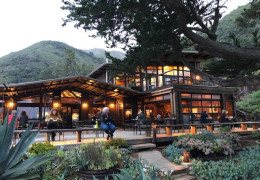
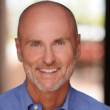

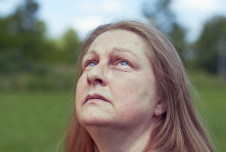
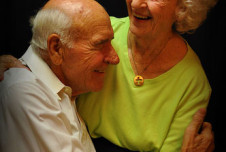

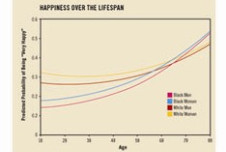
Comments